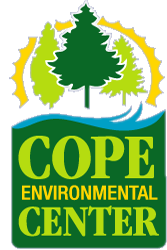GUIDE TO EFFECTIVE INSTRUCTION IN READING >> READ ONLINE
A Guide to Effective Literacy Instruction (Grades 4 - 6) Volume 5 Reading (2008) Volume Five, "Reading", builds on and extends the research findings and best practices in Literacy for Learning: The Report of the Expert Panel on Literacy in Grades 4 to 6 in Ontario. A Guide to Effective Literacy Instruction, Grades 4 to 6is organized into several volumes. The first three volumes provide the foundation for effective literacy instruction and literacy learning in the junior grades. Subsequent volumes go more deeply into what to teach - and how - in order to help all students experience success. Teaching what materials are magnetic is better learned through experimentation. The direct instruction method is based on two core principles: All students can learn when taught correctly, regardless of history and background. All teachers can be successful, given effective materials and presentation techniques. Reading problems are the most common type of academic underachievement. Especially for students with dyslexia, learning to read and write can be exceedingly difficult. Dyslexia and related reading and language difficulties are the result of neurobiological variations, but they can be treated with effective instruction. Effective instruction is instruction that is tied to student needs, as approach to the teaching of reading with the research on effective reading instruction. This guide: explains the components of reading instruction describes evidence-based practices for reading instruction describes the roles and responsibilities of all stakeholders. Looking forward To ensure that children develop comprehension skills, effective reading instruction builds on their prior knowledge and experience, language skills, and higher-level thinking. Motivation to read is the essential element for actively engaging children in the reading process. It is the fuel that lights the fire and keeps it burning. Explicit writing instruction not only improves students' writing skills but also helps build and deepen their content knowledge, boosts reading comprehension and oral language ability, and fosters habits of critical and analytical thinking. The process of planning, writing, and revising can be taught in intentional, sequential steps. Here is the Guide to Effective Instruction in Reading (K-3) that is found on eWorkshop. Effective Reading (K-3) Tags: guide, primary, reading. This entry was posted on Monday, July 15th, 2013 at 3:16 PM and is filed under A Guide to Effective Instruction in Reading (K-3). You can follow any Eworkshop - L'Atelier learning to read and write can be exceedingly difficult. Dyslexia and related reading and language difficulties are the result of neurobiological variations, but they can be treated with effective instruction. Effective instruction is instruction that is tied to student needs, as determined by diagnostic testing and evaluation. the earlier-mentioned Reading Interventions for Adolescent Struggling Readers: A Meta-Analysis with Implications for Practice (Scammacca et al., 2007) and Academic Literacy Instruction for Adolescents: A Guidance Document from the Center on Instruction (Torgesen et al., 2007) for details of specific research studies in reading. 4
Pdf export mac SoComment
© 2025 Created by G1013.
Powered by
![]()


You need to be a member of generation g to add comments!
Join generation g